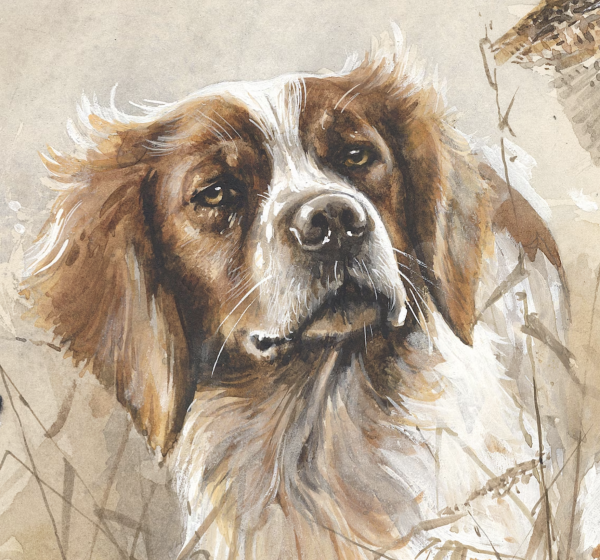
Named after the French province in which he was bred for centuries, the “French Brittany” is the original “recipe.” There are differences, however, between it and its American cousin that go beyond the visual clues of height, weight, type, and the black color gene that can make a French Brittany’s coat black roan or tricolor (the American Brittany appears in orange, white, and liver).
Those other differences are found in the field.
Both Brittanys are fantastic athletes, but hunters who have hunted over both find that the French Brittany tends to hunt closer and quarter tighter than the American Brittany, who, with her longer legs and faster speed, adapts to a wider range. Conversely, the French Brittany is cobbier, less leggy and lower to the ground – a close working, naturally quartering, instinctive-retriever who is considered a precise dog since he stays closer to his owner and moves with a purpose. Those qualities, plus nimbleness, agility, and quicksilver speed have lead to the breed being described as a “pocket rocket in the field.”
Also known as the Epagneul Breton, the breed was bred to hunt every kind of upland game bird in the field or woods. According to legend, this was the result of working class hunters who wanted a dog to poach small game on the estates of upper class aristocracy. Not likely to be wealthy enough to have kennels behind their cottage, these people also wanted a dog that would be laid-back at home, but a hunting dynamo in the field. We quite like a description we found that described the French Brittany as an “angel in the Home, but a demon in the field.”
Why did the breed evolve into two types in the first place?
Our understanding is that the French Brittany first hit American shores in the 1930s, in large part through Louis Thebaud, a Wirehaired Pointing Griffon breeder and American sportsman. In the US, the breed developed into a taller, faster, and more stubborn version of its ancestors because American hunters preferred a lighted-bodied, faster dog (which longer legs afforded) with a wider running ability. The black aspect of coat color was eliminated because it was felt that the gene pool in the United States was robust enough to disallow black coloration, and by the end of WWII, differences in type and hunting styles were noticeable. So much so that in 2002 the United Kennel Club formally recognized the American Brittany and the French Brittany as separate breeds. These days, members of the Club de l’Epagneul Breton of the United States register their dogs as Epagneul Bretons and follow the French standard for the breed, and conduct tests and field trials based on French regulations.
As we see it, debate over which Brittany is better is akin to holding debate over whether apples or oranges are better. There are tremendous Brittanys on both sides of the ocean, and the only immutable rule is to do one’s homework before adding either to one’s family.
Image: A detail from “Pointing” from Valery Siurha is available as a giclee here
